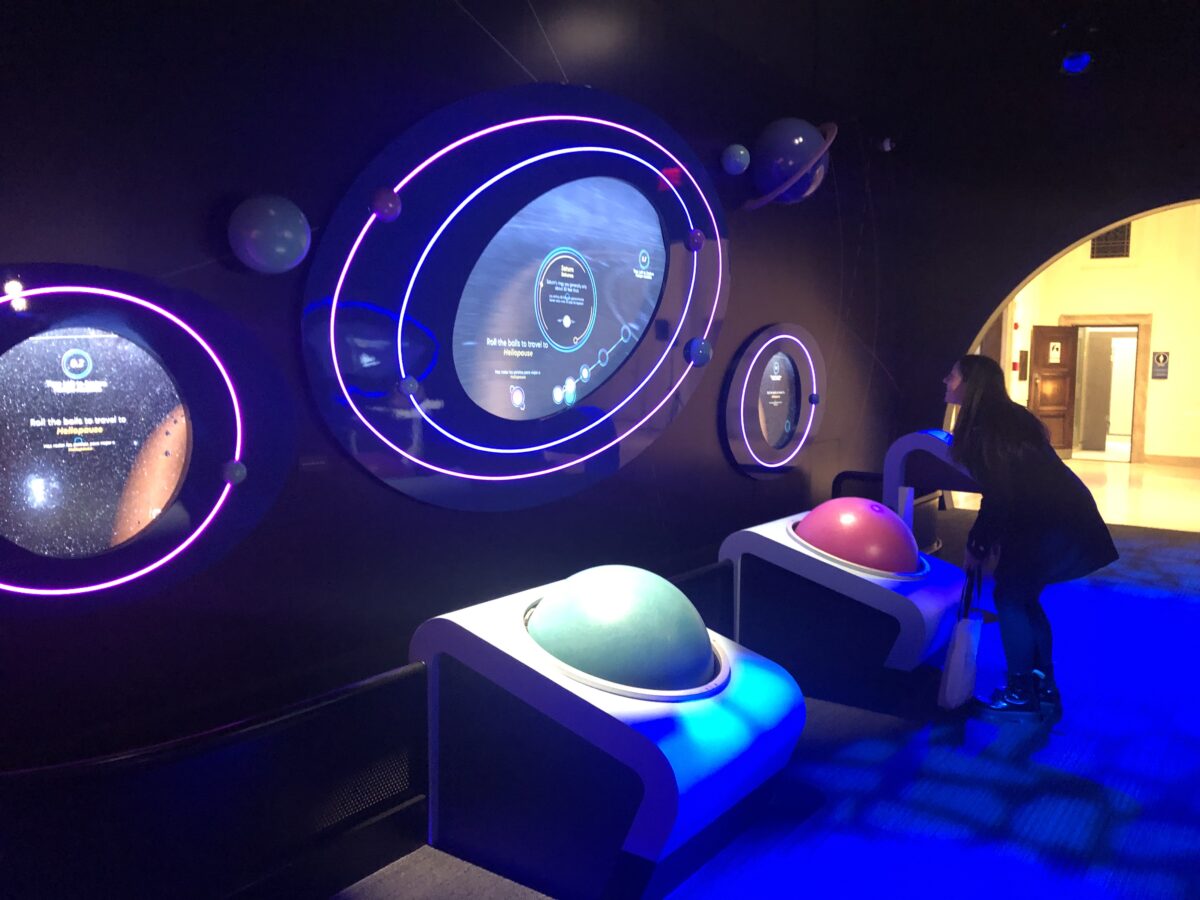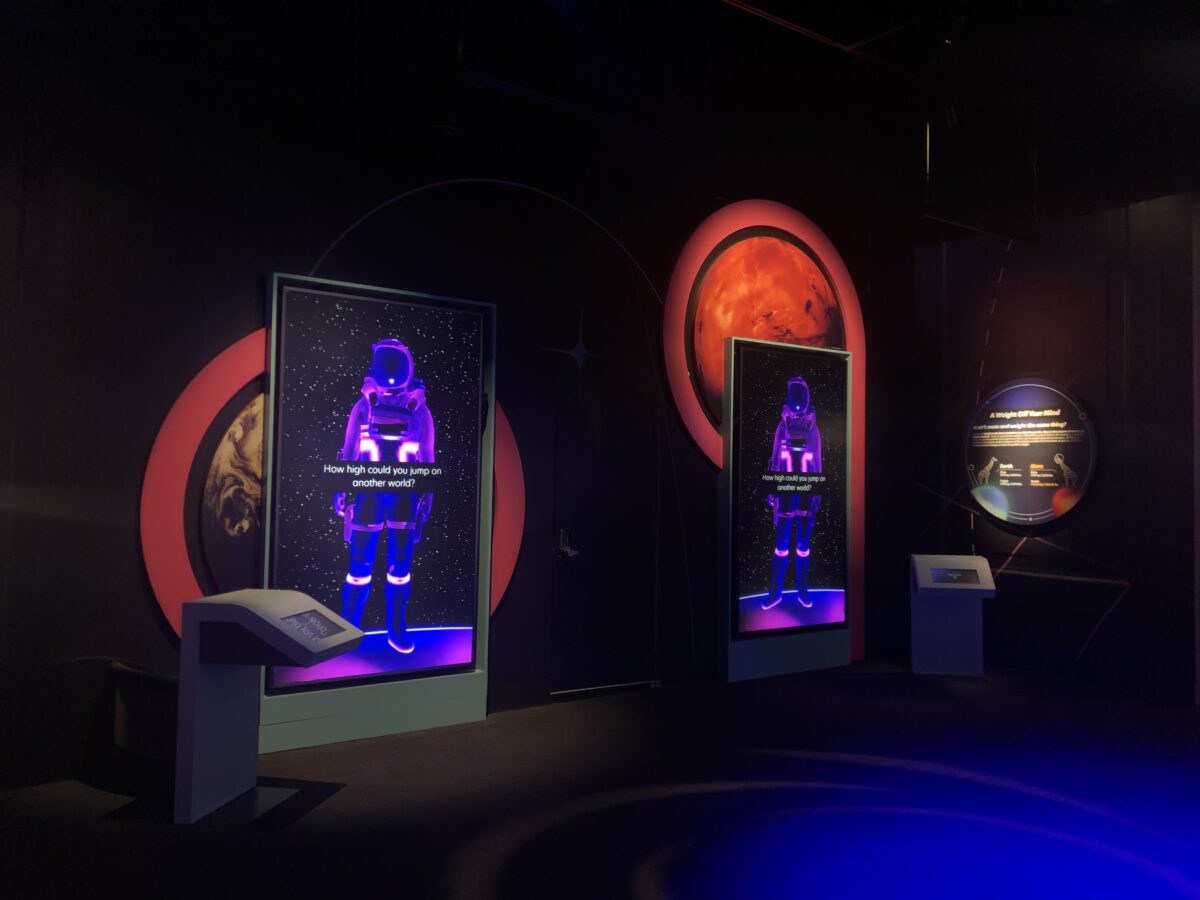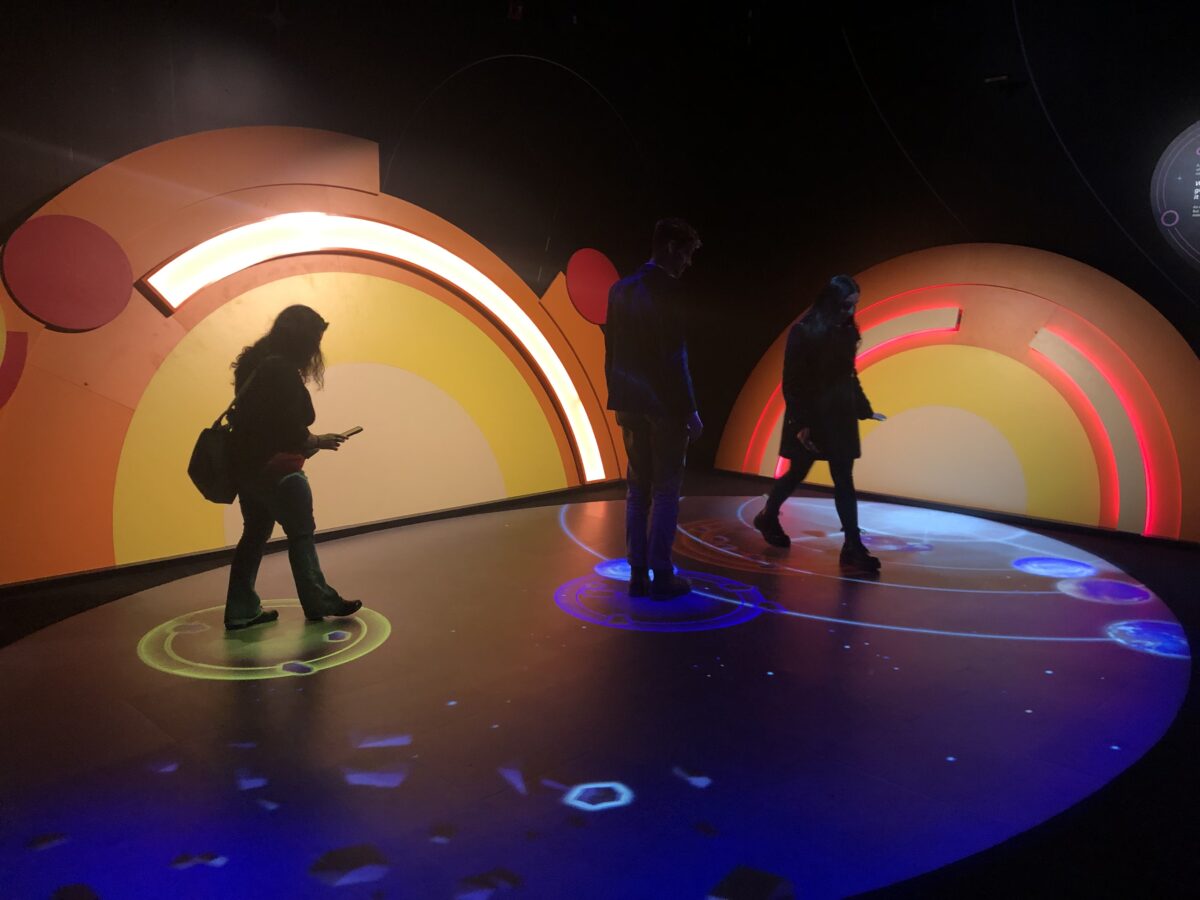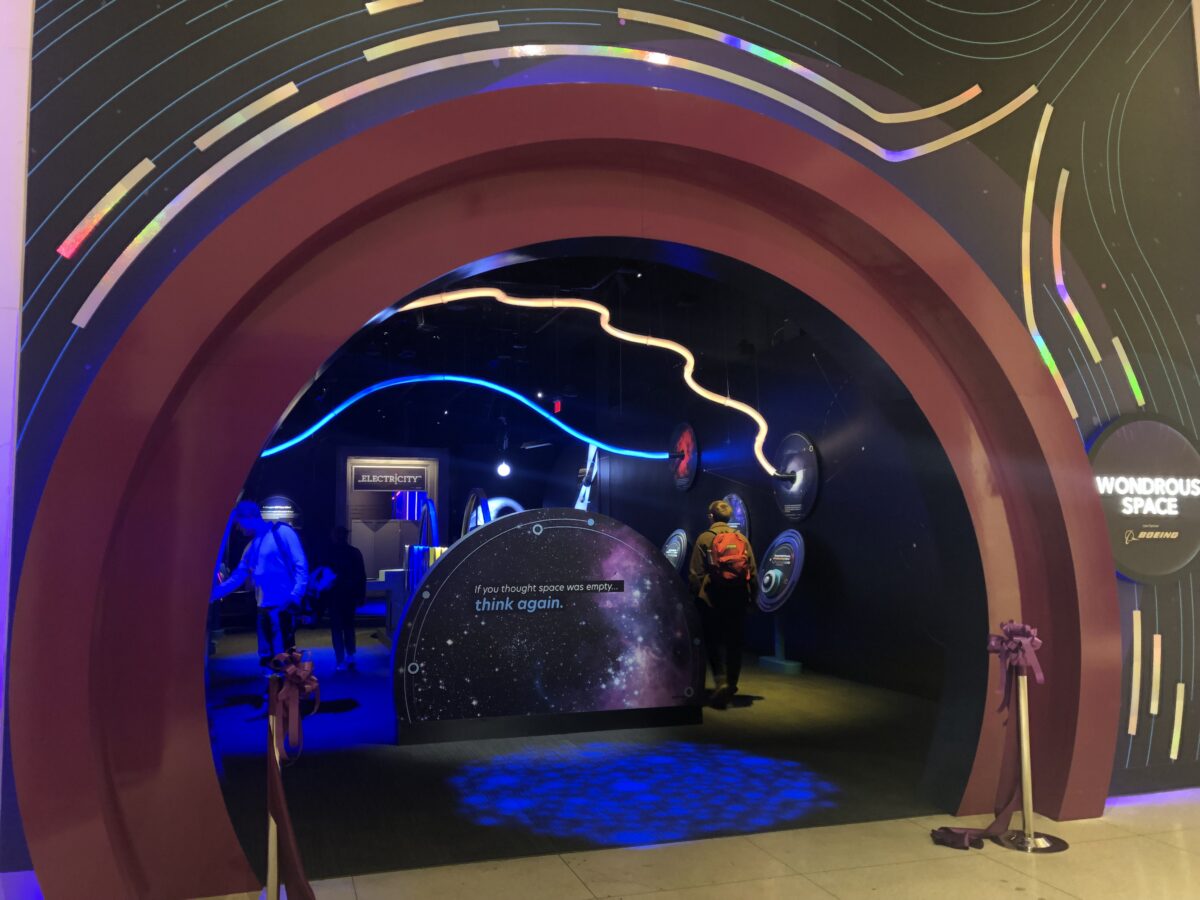In fact, you can explore the cosmos in Center City at The Franklin Institute starting on Nov. 4 when the museum opens its “Wondrous Space” exhibit.
The Franklin Institute launched a complete redesign in 2018, and “Wondrous Space” is the first of six new exhibits planned over the next six to seven years, said Abby Bysshe, chief experience and strategy office for the museum. These changes coincide with The Franklin Institute’s 200th anniversary in 2024.
This exhibit was developed over two years, starting with workshops where 150 Philadelphia children were asked which aspects of space and museum elements are most interesting to them. The exhibit’s team also brought on an advisory committee to help choose the content in the exhibit.

Behind the scenes of the electromagnetic waves exhibit back in October, before it was finished. (Technical.ly/Sarah Huffman)
“Wondrous Space” spans 7,500 square feet over two floors of the museum.
The downstairs exhibit is “phenomenon based” with elements featuring electromagnetic waves, gravity and black holes, Bysshe told Technical.ly. The upstairs exhibit is about space travel, living in space, exploring space and pursuing a career in the space industry. It also contains 80 space-related artifacts from companies around the world and a rocket engine from the Kennedy Space Center.

Display cases in the upstairs exhibit house space-related artifacts. (Technical.ly/Sarah Huffman)
The exhibit’s interactive elements include giant trackballs to control screens as you travel through “space” and sensors that can tell users how high they can jump on different planets. Bysshe said the team didn’t want to incorporate technology just for the sake of it — the tech had to make sense for the purpose of the display.
“What’s the technology that’s going to best serve that? It may not even be digital, it may be something that’s a physical interactive, it may be a media piece,” Bysshe said, “so it’s really starting with the story that we’re trying to tell and then finally, the technology and the delivery method that’s going to make the most sense.”

Giant track balls allow users to navigate through space (before its completion). (Technical.ly/Sarah Huffman)

Giant track balls allow users to navigate through space (after its completion). (Technical.ly/Sarah Huffman)

When a visitor jumps in front of the screen of this interactive display, it will calculate how high they can jump on different planets. (Technical.ly/Sarah Huffman)
When visitors first walk in, they see giant electromagnetic waves running across the walls and overhead. The waves are interactive so when you tap the display, it triggers a wave of light and sound across the room, said Dan Picard, creative director and co-owner of the experiential design firm MDSX, who led the creative design of the exhibit.

An interactive floor for users to act as the force of gravity. (Technical.ly/Sarah Huffman)
The museum worked with a music studio to create custom sounds for all of the interactive displays that went together, Bysshe said. The team wanted to figure out what space sounds like, so they also asked students in the community for their thoughts about that, Picard said.
“There’s some activities that are really exciting like space jumps, there’s really cool things like EM waves, but then you can actually have a tranquil experience and learn about really cool spatial phenomena,” Picard said. “We’re trying to push the envelope of what the experience is like to be in space by giving you that 360 experience as much as possible.”

Design and test your own rover interactive display. (Technical.ly/Sarah Huffman)
Throughout the exhibit are digital panels that show videos or slides of information, rather than printed captions. Bysshe said they thought about relevancy in the design process, too, making sure that the spaces were designed in a way that would be easy and inexpensive to update.
“Everything is tied to a massive show control system that adjusts the lighting and the sound, whatever we need, and allows us to update content whenever there’s relevant new space information that we want to share,” Picard said. “So I think that’s a big thing, is like, just being able to be as flexible as the actual information and science will allow.”

Abby Bysshe (left) and Dan Picard. (Technical.ly/Sarah Huffman)

The Tech Behind is a Technical.ly series in which we explore the technology that powers notable institutions. Have an idea for our next edition? Tell us.
Before you go...
Please consider supporting Technical.ly to keep our independent journalism strong. Unlike most business-focused media outlets, we don’t have a paywall. Instead, we count on your personal and organizational support.
Join our growing Slack community
Join 5,000 tech professionals and entrepreneurs in our community Slack today!

The person charged in the UnitedHealthcare CEO shooting had a ton of tech connections

From rejection to innovation: How I built a tool to beat AI hiring algorithms at their own game

Where are the country’s most vibrant tech and startup communities?



